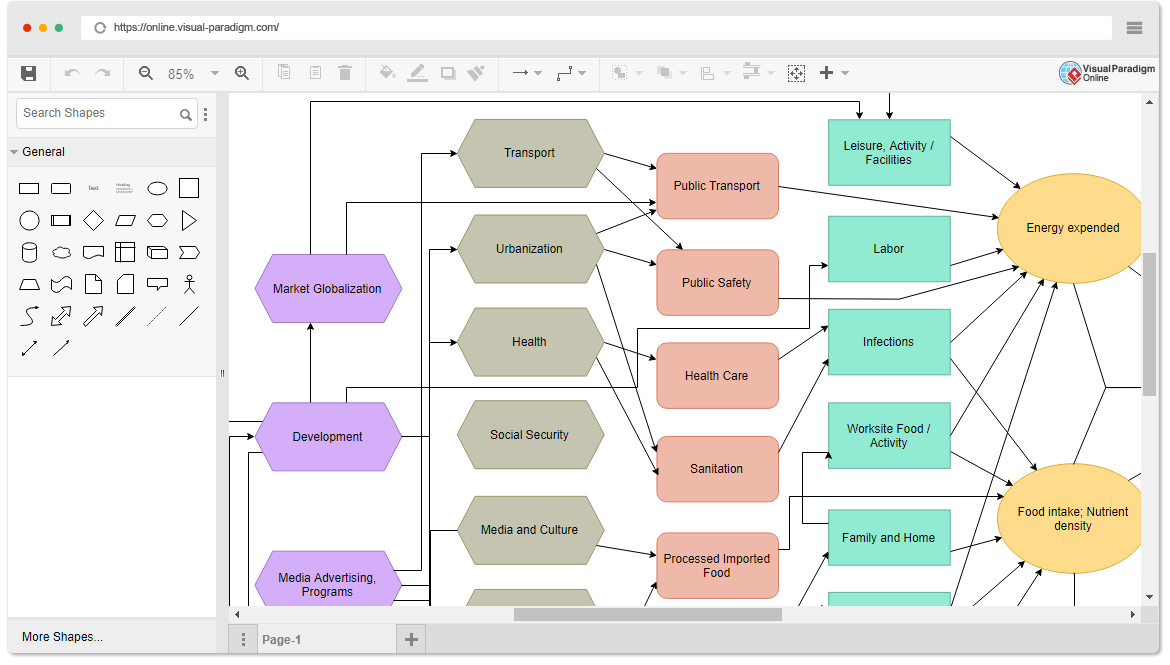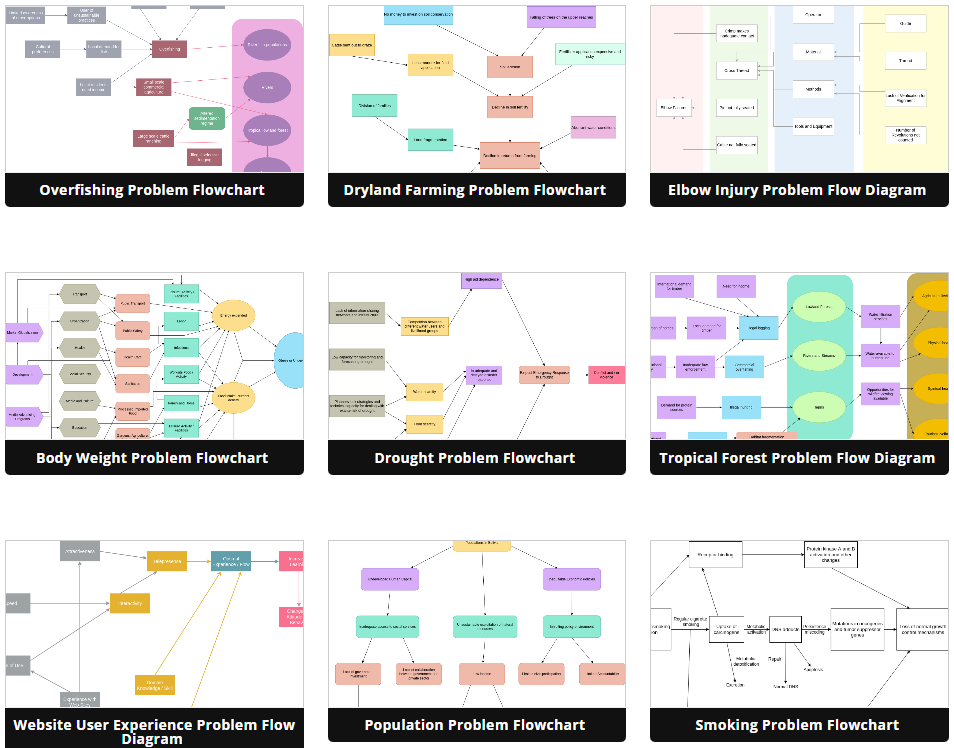Comprehensive Guide to Problem Flow Diagrams
Introduction
Problem flow diagrams, also known as logic diagrams, are a valuable tool for breaking down complex issues into smaller, interconnected factors that contribute to the main problem. These diagrams empower individuals directly impacted by a problem by helping them gain a deeper understanding of the various elements that constitute a larger issue. Additionally, problem flow diagrams assist decision-makers in identifying steps they can take to address the problem or its components effectively.

Purpose
The primary purpose of a problem flow diagram is to:
- Simplify Complexity: Problem flow diagrams break down complex issues into manageable components, making it easier to analyze and address specific aspects of the problem.
- Facilitate Understanding: They provide a visual representation of the problem, allowing stakeholders to grasp the interconnections between various factors.
- Empower Stakeholders: These diagrams empower individuals involved in problem-solving by giving them a clear view of the problem’s components and potential solutions.
- Inform Decision-Making: Problem flow diagrams help decision-makers identify areas that require immediate attention and prioritize actions.
Key Concepts and Elements
To create an effective problem flow diagram, you need to understand its key concepts and elements:
1. Problem Statement
Begin by defining the main problem or issue you want to address. This statement serves as the central focus of the diagram.
2. Causal Factors
Identify the factors or components that contribute to the problem. These are the elements that, when altered, can help mitigate or resolve the issue.
3. Relationships
Determine the relationships between causal factors. Establish how these factors interact with and influence each other. Use arrows or lines to represent these connections.
4. Solutions and Actions
For each causal factor, propose potential solutions or actions that can be taken to address or mitigate the issue. These are the steps that stakeholders can implement.
5. Prioritization
Assign priorities to causal factors and solutions based on their importance and urgency. This helps stakeholders focus on the most critical aspects of the problem.
Learn by Examples using Visual Paradigm Online
Visual Paradigm Online is a powerful tool for creating problem flow diagrams. Here are some examples using pre-made templates:

Example 1: Environmental Pollution
- Problem Statement: “Addressing Environmental Pollution.”
- Causal Factors:
- Air Pollution
- Water Pollution
- Land Pollution
- Relationships: Show how these factors influence each other. For instance, depict how air pollution contributes to water pollution.
- Solutions and Actions: Identify specific actions like reducing emissions, enforcing pollution control regulations, and promoting sustainable practices.
- Prioritization: Highlight the most critical factors and actions, such as immediate emission reductions and stricter regulatory enforcement.
Example 2: Community Health Improvement
- Problem Statement: “Improving Community Health.”
- Causal Factors:
- Lack of Access to Healthcare
- Poor Nutrition
- Sedentary Lifestyle
- Relationships: Illustrate how these factors interact. For instance, show how lack of access to healthcare contributes to poor nutrition.
- Solutions and Actions: Suggest actions like building healthcare facilities, promoting healthy eating habits, and encouraging physical activity.
- Prioritization: Emphasize urgent actions, such as increasing healthcare access and launching public health campaigns.
Conclusion
Problem flow diagrams are indispensable tools for tackling complex problems. They provide clarity, empower stakeholders, and inform effective decision-making. By breaking down issues into manageable components, you can address both localized community problems and larger societal challenges with precision and purpose. Utilize tools like Visual Paradigm Online to create visually engaging problem flow diagrams that facilitate understanding and drive positive change.

